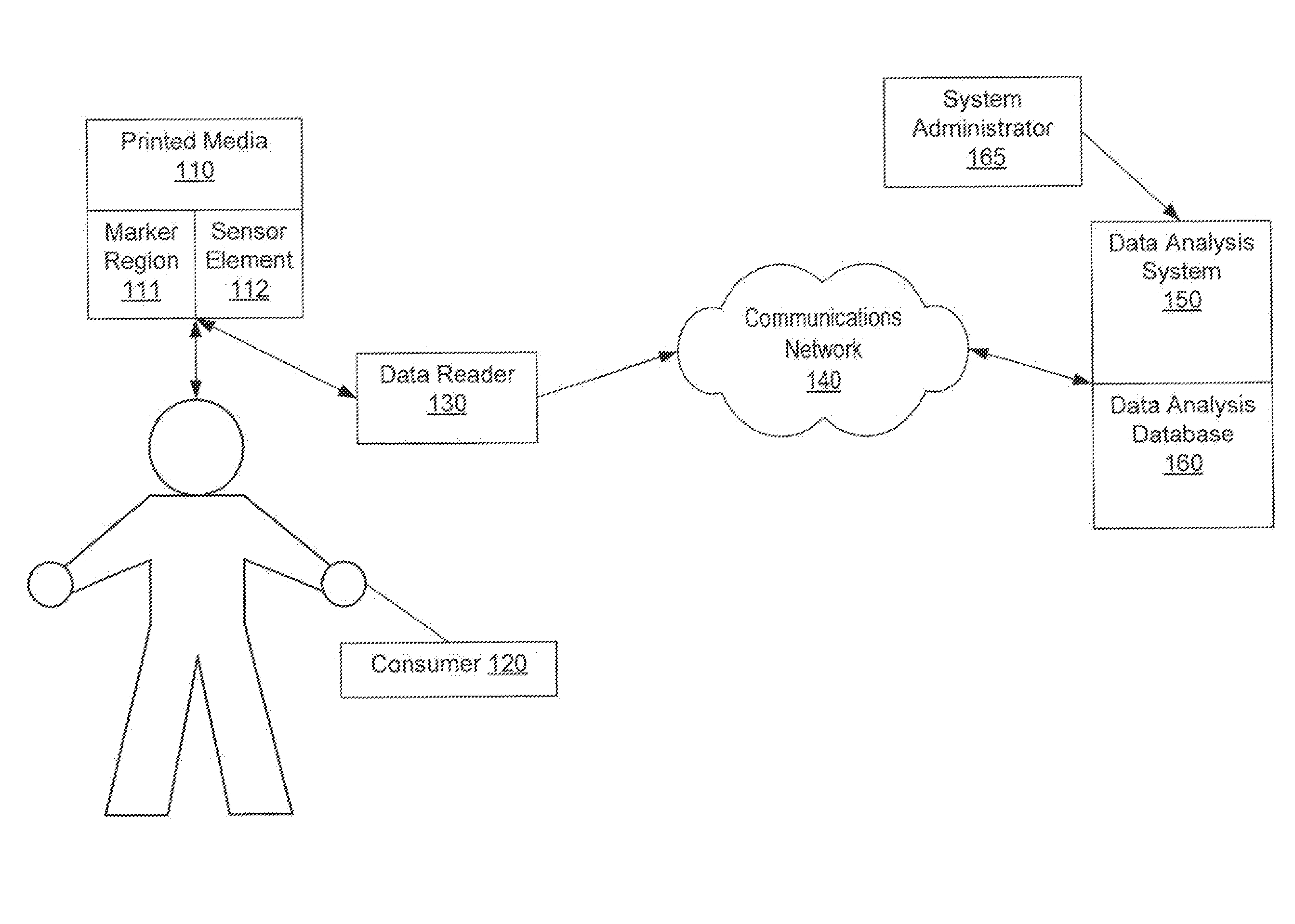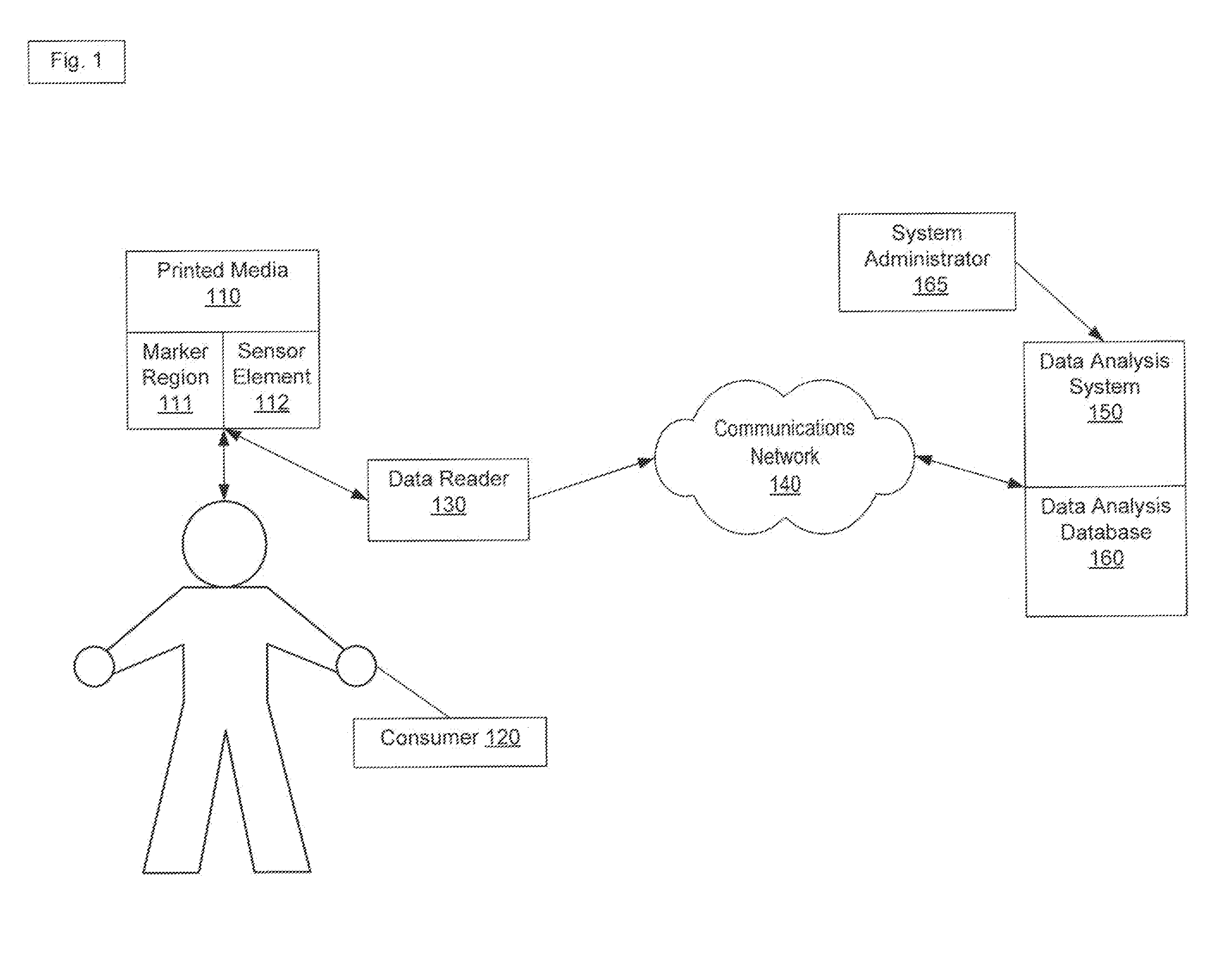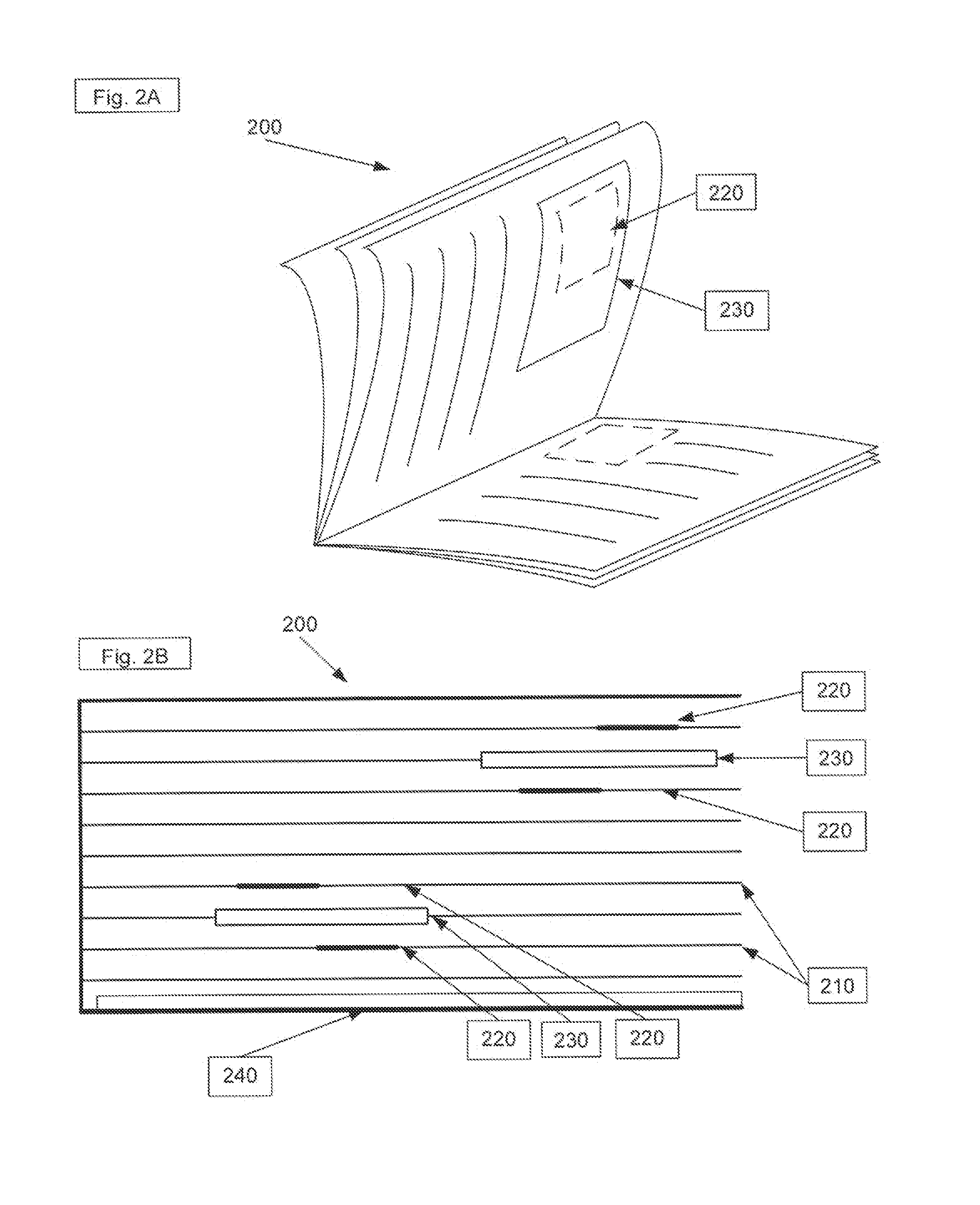System and method for rfid-based printed media reading activity data acquisition and analysis
a technology of rfid and printed media, applied in the field of acquisition of media exposure information, can solve the problems of requiring additional personnel/training costs, affecting the quality of printed media, so as to facilitate significant flexibility
- Summary
- Abstract
- Description
- Claims
- Application Information
AI Technical Summary
Benefits of technology
Problems solved by technology
Method used
Image
Examples
first embodiment
[0045]the sensor element implements a sensor card or label 310 in magazine 300 that includes an RFID tag, a battery 320, and an internal clock / memory 330, in addition to capacitive sensing circuitry 335. Depending on the particular implementation, the battery 320 may be a thin-film type. Also, depending on the power requirements for the implementation, it may be rechargeable or non-rechargeable. If a non-rechargeable battery is implanted, the battery 320 for RFID sensor card 310 should last at least one month, preferably as long as two months. RFID sensor card 310 can be mounted into the spine of the magazine or a plastic cover / magazine holder. RFID sensor card 310 may also be mounted with a perforated edge 315 so that it can be torn out of magazine 300 and also able to record the date and time at which it is detached from the magazine 300.
[0046]The capacitive sensing circuitry 335 consists of several electrically conductive electrodes which function as near-field antennas and wirel...
second embodiment
[0050]A second embodiment involves the use of a sensor card 410 which contains one or more passive electromagnetic resonant circuits 445, 455 and 465. In this case, the electrically conductive marker regions 440, 450 and 460 are positioned to detune one or more or the resonant frequencies of the sensor card's passive sensor circuit 445, 455 and 465 and thus provide a means of electromagnetically detecting and monitoring the presence and movement of the marker regions 440, 450, and 460. It should be noted once again that this embodiment does not require any electrical contact between the marker regions and the sensor card 410 (and that as illustrated the marker regions are situated at various points in magazine 400 and are not elements within the RFID Sensor Card 410—indicated by the dashed lines of the marked portions).
[0051]FIG. 4A illustrates the sensor element as RFID card 410 with a rechargeable battery 420 or other energy source that can be bound into magazine 400. Advantageous...
PUM
 Login to View More
Login to View More Abstract
Description
Claims
Application Information
 Login to View More
Login to View More - R&D
- Intellectual Property
- Life Sciences
- Materials
- Tech Scout
- Unparalleled Data Quality
- Higher Quality Content
- 60% Fewer Hallucinations
Browse by: Latest US Patents, China's latest patents, Technical Efficacy Thesaurus, Application Domain, Technology Topic, Popular Technical Reports.
© 2025 PatSnap. All rights reserved.Legal|Privacy policy|Modern Slavery Act Transparency Statement|Sitemap|About US| Contact US: help@patsnap.com



